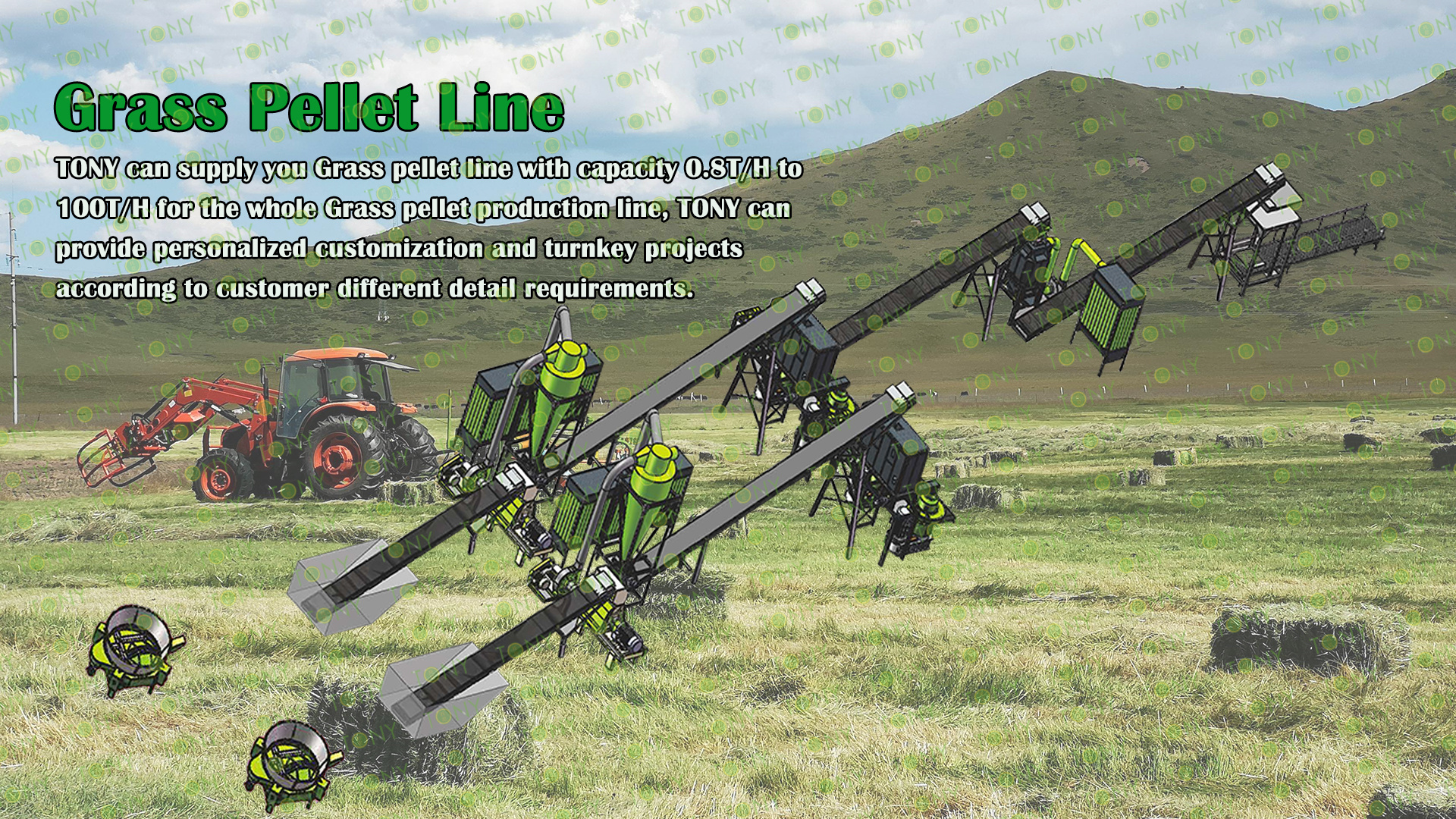
TONY Design 12-15Ton/Hour Grass Production Line Specification
Global Distribution Of Grassland Resources:
1. Total Grassland Area Worldwide
The total area of grassland in the world is about 6.758 billion hectares, accounting for 50% of the total land area. These grasslands include various types of vegetation, such as grasslands, meadows, shrubbery and wood land, which form an important part of the Earth's ecosystem
2. Overview Of The Main Grass-Producing Countries
America
There are two types of grasslands in the United States: eastern grasslands and western steppe grasslands. The eastern grassland has more precipitation, while the w estern grassland is short and sparse due to drought. The primary productivity of the grasslands in the Midwest of the United States is not high, but the soil fertility and the good ecological environment of the grasslands are maintained through reasonable management of grassland animal husbandry
Canada
Canada is vast and sparsely populated, and some natural grasslands are still used for grazing. Their use of grassland is characterized by the use of 50%, regular conversion of grassland, a strict rotational grazing system, and monitoring, exceeding the utilization of fines, serious circumstances to recover the state, more attention to the protection of resources
New Zealand
The terrain of New Zealand is flat and the climate is moist and warm, which is suitable for the cultivation of artificial grassland. At present, 66% of New Zealand's land has become artificial grassland, mainly cultivated grass including ryegrass and clover
Mongolia
The grassland type in Mongolia is temperate grassland, and the productivity level is not high. Due to the relatively backward management mode, the situation of grassland resources needs to be improved.
Grassland resources are widely distributed in the world, with significant differences in grassland types and productivity in different regions. Understanding these distributions contributes to better management and use of grassland resources, promoting global ecological balance and sustainable agricultural developmen.
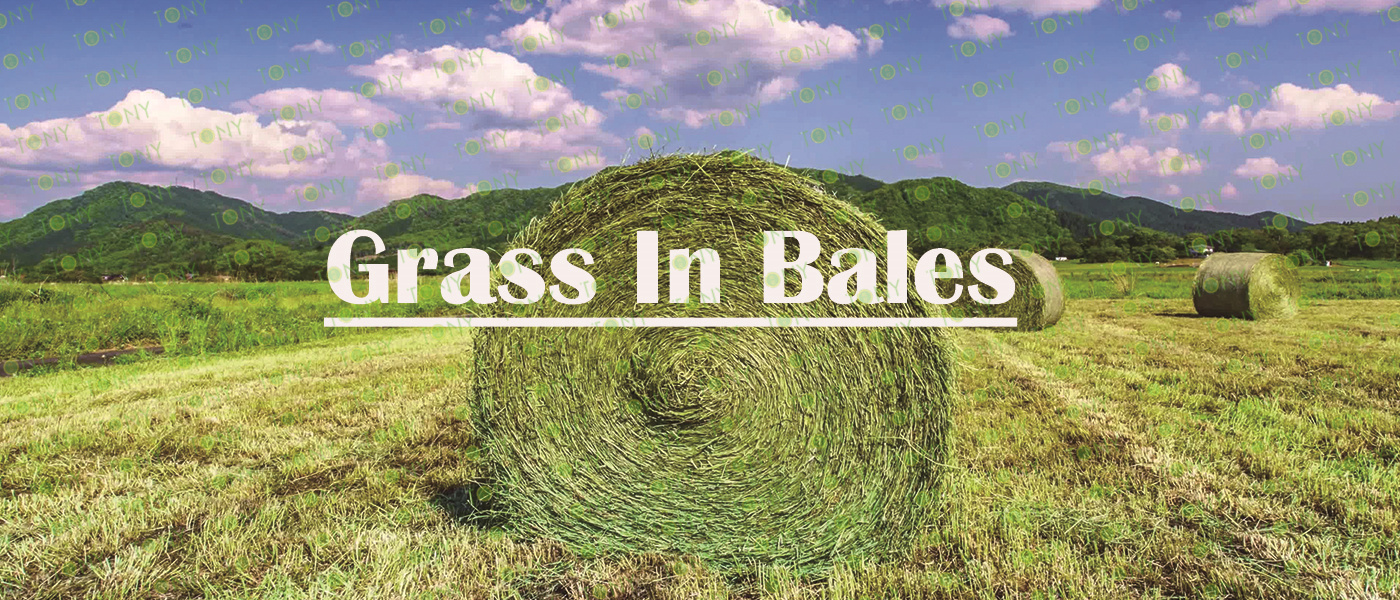
Grass pellet feed has many advantages over traditional forage:
1. High Feed Conversion Rate:
Pellet feed can help you get more meat, eggs and milk with less forage in winter.
2. Small Size:
The volume of pellet feed is only about 1/4 of the raw hay, which makes it easier to store and transport, and also reduces dust, which is conducive to human and animal health.
3. Increase Palatability:
After processing into pellets, the quality of the forage is improved and the palatability is increased. For example, melilotus clover has a special smell, which domestic animals may not like to eat, but when it is made into pellets, it becomes a forage with strong palatability and high nutritional value.
4. Expand Feed Sources:
Some of the original branches of the rough, not easy to be eaten by livestock forage, such as good if quinoa, firewood, etc., after crushing and processing into grass pellets, become the favorite feed of livestock.
In summary, Grass biomass pellet feed has many advantages, including improving feed utilization, preventing picky eating of animals, sterilization, reducing environmental pollution, improving animal feed intake, convenient storage and transportation, expanding feed sources and improving feed quality. These advantages make the grass biomass pellet feed widely used and promoted in modern animal husbandry.
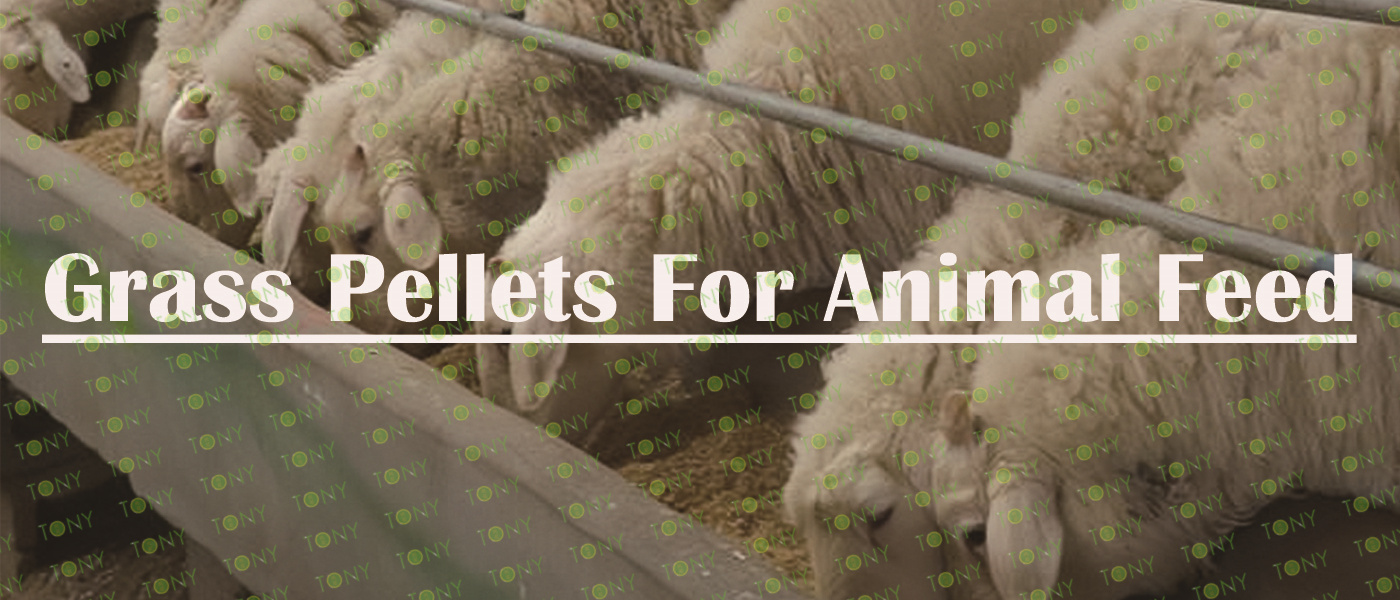

1.Abundant Raw Materials:
Grass is widely distributed around the world and can be found in farmland, residential green belts, and square lawns. There is a large amount of grass available, providing a rich and sustainable source of raw materials for pellet production.
2.Renewable Energy Source:
Grass is a renewable resource. It can be grown and harvested continuously, making it an environmentally friendly alternative to non-renewable fossil fuels. Using grass to make pellets helps to reduce reliance on finite energy sources and contributes to energy sustainability.
2.Waste Utilization:
Grass that is often considered waste, such as lawn clippings or agricultural residues, can be transformed into valuable pellets. This not only reduces waste but also creates a useful product, adding economic value.

1.The main factors affecting the yield of Grass pellets include raw material selection, raw material pretreatment, equipment configuration and ratio adjustment.
First of all, raw material selection is one of the key factors affecting the yield of Grass pellets. The type and quality of raw materials directly affect the output and quality of pellets. For example, when Grass is used as raw material, clean and impurity-free stalk needs to be selected to ensure the density and molding effect of the particles. In addition, the moisture content of the raw materials is also very important. Excessive moisture content will cause wall sticking during the granulation process and affect the output.
Secondly, raw material pretreatment is also an important factor affecting output. Impurities and moisture content in the raw materials will affect the molding effect and output of the particles. Through pre-treatment methods such as crushing and screening, impurities can be removed and the uniformity of raw materials can be improved, thereby increasing particle yield.
2.Equipment configuration is also an important aspect that affects output. The design and automation level of biomass pellet equipment directly affect production efficiency and output. Reasonable equipment configuration and advanced process flow can significantly improve production efficiency and particle quality.
3.Finally, proportion adjustment is also a key factor affecting output. During the production process, the ratio of raw materials needs to be continuously adjusted and optimized to ensure the best molding effect and output. For example, the proportions of raw materials such as Grass and rice husks need to be adjusted according to specific conditions to achieve optimal yield and quality.
By optimizing raw material selection, pretreatment, equipment configuration and ratio adjustment, the yield and quality of Grass pellets can be effectively improved.

Benefit Analysis Of Grass Pellets:
1. Economic Benefits
(1) Improve Feed Conversion Rate: The feed conversion rate of grass pellets is higher than that of traditional forage, which means that under the same feeding conditions, the use of grass pellets can get more meat, eggs and milk output.
(2)Save On Storage And Transportation Costs: The volume of grass pellets is only 1/4 of the volume of raw hay, which makes storage and transportation more convenient, thus reducing the associated costs.
(3)Expand Feed Sources: By processing some tough plants or crop by-products, chaff shells, straw and various leaves into grass pellets, it can become the forage that domestic animals like to eat, so as to expand feed sources and reduce feed costs.
2. Ecological Benefits
The production and use of grass pellets also have a positive impact on the ecological environment.
(1) Reduce Environmental Pollution: In the production process of grass pellets, environmental pollution can be reduced by adopting green and environmentally friendly planting and processing technology to ensure the safety of grass pellets
(2) Efficient Use Of Resources: Through exploring the circular economy model, the use of grass particle by-products and waste can achieve efficient use of resources and environmental friendliness.
3. Social Benefits
(1) Promote Agricultural Modernization: The production and use of grass pellets is an important part of agricultural modernization, which can improve agricultural production efficiency and promote the optimization and upgrading of agricultural industrial structure.
(2) Increase Farmers' income: Through the production and sale of grass pellets, it can bring additional income to farmers and help improve farmers' living standards.
In summary, grass pellets have significant advantages in terms of economic benefits, ecological benefits and social benefits. With the progress of technology and the expansion of the market, the benefits of grass pellets will be further revealed.
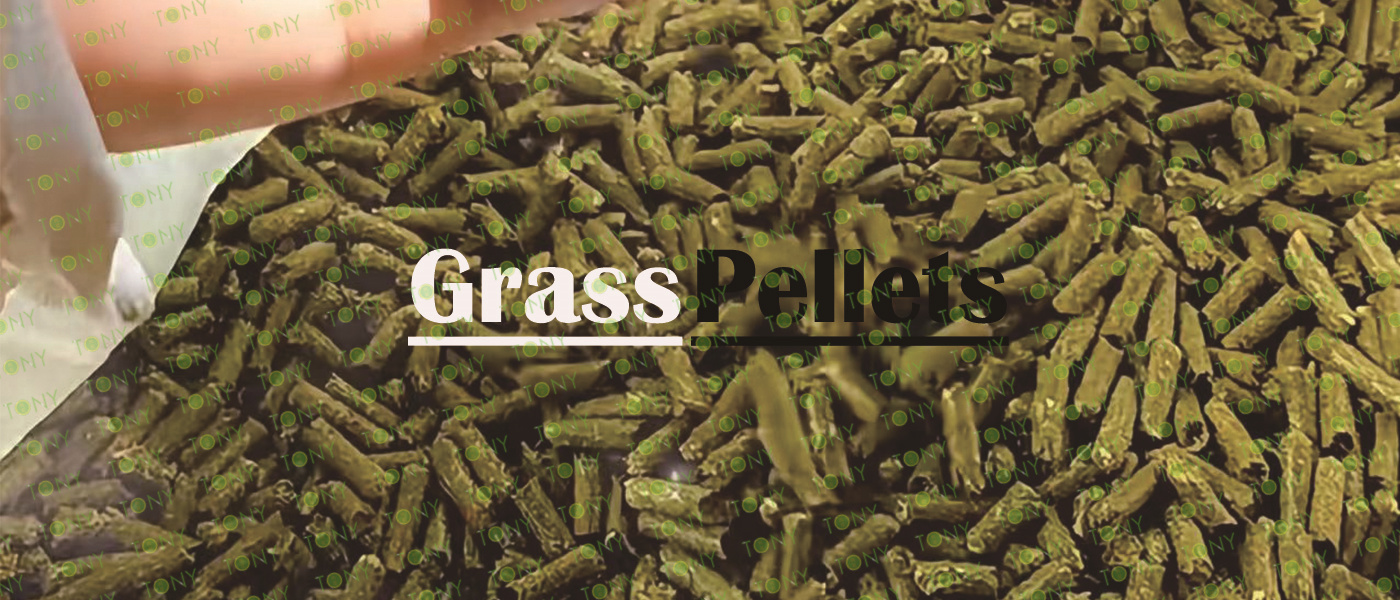

Improve Feed Conversion Rate:
After processing, the nutrients of grass pellets are more concentrated. Feeding livestock and poultry with grass pellets in winter can obtain more meat, eggs and milk with less forage, thereby improving the economic benefits of breeding.
Small Volume, Easy To Store And Transport:
Grass pellet feed is only about 1/4 of the volume of raw hay, which greatly reduces storage space. At the same time, it has a regular shape and high density, and is not easy to scatter or deteriorate during transportation, which reduces transportation costs and losses. It has less dust and is also beneficial to the health of humans and animals.
Increase Palatability And Improve Forage Quality:
Some grasses may have a special smell or a hard texture, which makes livestock dislike eating them, such as sweet clover, but after being made into grass pellets, through processes such as crushing, mixing, and extrusion, it can improve its taste and flavor and increase livestock's feed intake.
Expand Feed Sources:
Forages with coarse branches such as Eurasia and Sheepwood become forage that livestock like to eat after being crushed and processed into grass pellets, so that the grass with low utilization rate can be effectively utilized, enriching the types and sources of feed.
Balanced Nutrition:
When making grass pellets, different types of grass powder can be mixed with concentrates, minerals, vitamins, etc. in a certain proportion according to the nutritional needs of various livestock and poultry to prepare grass pellets containing different nutrients to ensure that livestock obtain comprehensive and balanced nutrition.



1.Growing Demand For Renewable Energy: With increasing global awareness of environmental issues and the need to reduce carbon emissions, there is a growing demand for renewable and sustainable energy sources. Grass pellets, as a clean and renewable fuel, are well-positioned to meet this demand. Governments and industries are also providing support and incentives for the development and use of renewable energy, which further drives the market growth of grass pellets.
2.Expansion In Heating Applications: In the residential and commercial heating sectors, there is a trend towards using more sustainable and environmentally friendly heating options. Grass pellet stoves and boilers are becoming increasingly popular as they offer an efficient and clean way to heat homes and buildings. This growing interest in pellet heating systems is expected to boost the demand for grass pellets.
3.Potential In Emerging Markets: As the technology for grass pellet production improves and becomes more widely known, there is potential for market expansion in emerging economies. These regions may have abundant grass resources and a growing need for energy, presenting new opportunities for grass pellet producers and suppliers.
4.Diversification Of End Uses: In addition to heating and power generation, research and development efforts are underway to explore other potential applications of grass pellets. This includes their use in bio-based products and as a raw material for various industrial processes, which could further open up new market avenues and increase the market potential of grass pellets.

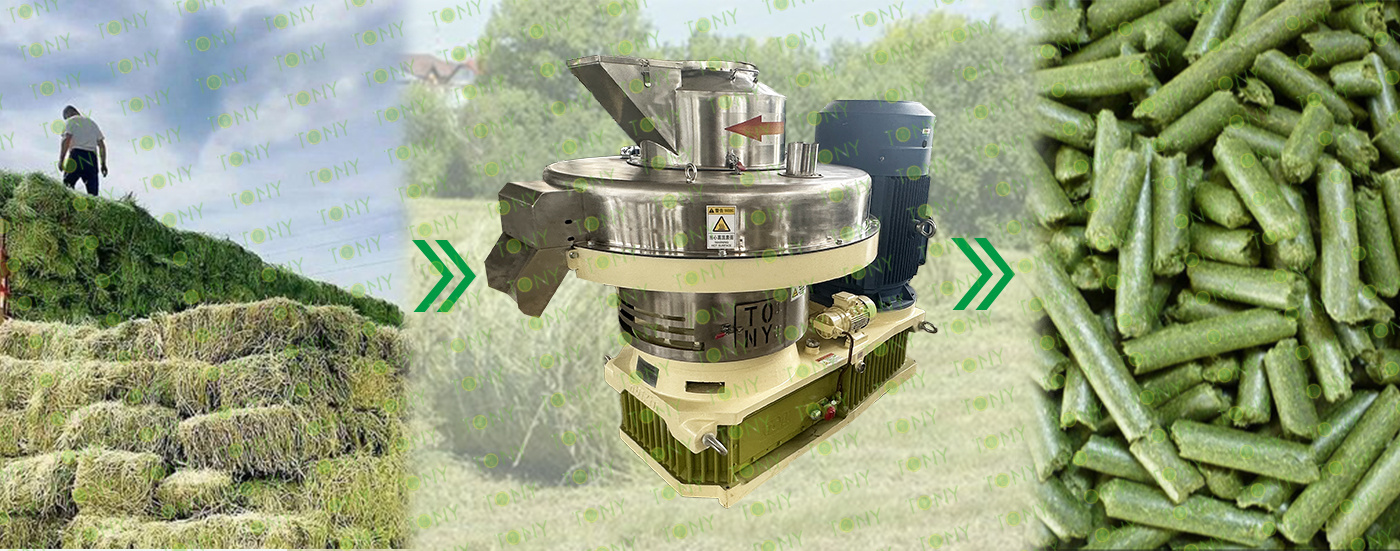
1.Working Principle Of Grass Pellet Processing Equipment
The working process of the equipment includes the following main steps:
Feeding Stage: The raw materials enter the equipment through the feed port and are ready for the next step of processing.
Preliminary Crushing: Before the raw materials enter the compression chamber, they usually need to undergo preliminary crushing to ensure that the raw material particles are uniform in size, which is convenient for subsequent high-pressure compression and molding.
High-pressure Compression: After the raw materials enter the compression chamber, they are subjected to strong compression force and are squeezed into strips or other shapes to enhance the bonding force between the particles.
High-temperature Treatment: The compressed raw materials enter the high-temperature furnace for heat treatment to promote the pyrolysis and polymerization of components such as lignin, and further improve the calorific value and corrosion resistance of the particles.
Cooling and Molding: The raw materials after high-temperature treatment need to be cooled by the cooling system to prevent overheating, deformation or combustion, and then molded into regular granular solid fuels under the action of the mold or extrusion plate.
Discharging Stage: The molded particles are discharged through the discharge port to become the final biomass pellet fuel product.
2. Characteristics Of Grass Pellet Processing Equipment
1.Grass pellet processing equipment has the characteristics of high efficiency and low energy consumption. It can quickly process biomass raw materials into fuel pellets, which improves production efficiency.
2.The pellet machine has molds of various specifications, and can select corresponding molds for processing according to different biomass raw materials, which improves the adaptability of processing.
3.The equipment for processing biomass pellets has the characteristics of high automation and good safety, which effectively reduces labor intensity and improves production efficiency.
4.The granular biomass fuel processed by the Grass pellet processing equipment has stable quality and specifications, which meets the production standard requirements.

TONY Brand 12-15Ton/Hour Grass pellet manufacturing plant can process Grass,stalk,It is widely used in poultry feed, cattle, sheep and horse feed. It can also replace coal for burning.
1.Capacity: 12-15Ton/Hour
2.Raw Materials: Grass ,wheat straw, corn straw, rice straw, beet straw, various Grass and straw,etc.
3.Moisture: About 10-15%.
4.Application: All kinds of grass.
5.Finisheh Pellets Markets:Feed, fertilizer and fuel fields

1.Project Name: Grass Pellet Line
2.Raw Materisl: Grass
3.Moisture Of Raw Material: 10%-15%
4.Capacity: 12-15Ton/Hour
5.Process: 1.Grinding Process→2.Fine Crushing Process→3.Pelleting Process→4.Cooling Process→5.Packing Process
6.Main Machine: Rotary Cutter TPX3500, High Effective Hammer Mill TFD75-200KW *2Sets, TONY Pellet Machine TYJ551-III-132KW, Pellets Cooler And Belt Conveyors.
7.Total Power: About 1600KW
8.Need Area: About 700-900m㎡
9.Project Country: New Zealand
10.Voltage: 230V,50HZ


|
|
Project Layout For Customer |
|
1.Product: Grass Pellets Line 2.Capacity: 12-15T/Hour 3.TONY Brand 12-15Ton/Hour Grass Pellet Line Project Process 4:Main Machine: Rotary Cutter,Hammer Mill, TONY Pellet MachineTYJ551-III-132KW,Pellets Cooler,And Belt Conveyors. 5.Total Power: About 1600KW 6.Need Area: About700-900m㎡ 7.Country: New Zealand |


|
How To Use TONY Pellet Line To Proceed From Grass Into Pellets? It mainly contains the following steps and machines as following: 1.To Use TONY Rotary Cutter To Grind Grass Into 30-40mmChips. 2.To Use TONY Hammer Mill To Crush 30-40mm Chips Into 8-14mm Sawdust. 3.To Use TONY Vertical Ring Die Pellet Machine To Products Pellets With φ12-15mm. 4.To Use TONY Galvanized Cooler To Cool Pellets From 80-90℃ to 20-30℃. You Can Contact TONY To Get For More Details Information And Quotation. 5.To Use TONY Ton Packing Machine To Packing Pellets To 1T/Bag. |
|
|||||||||||||||||||||||||||||||||||||||||||||
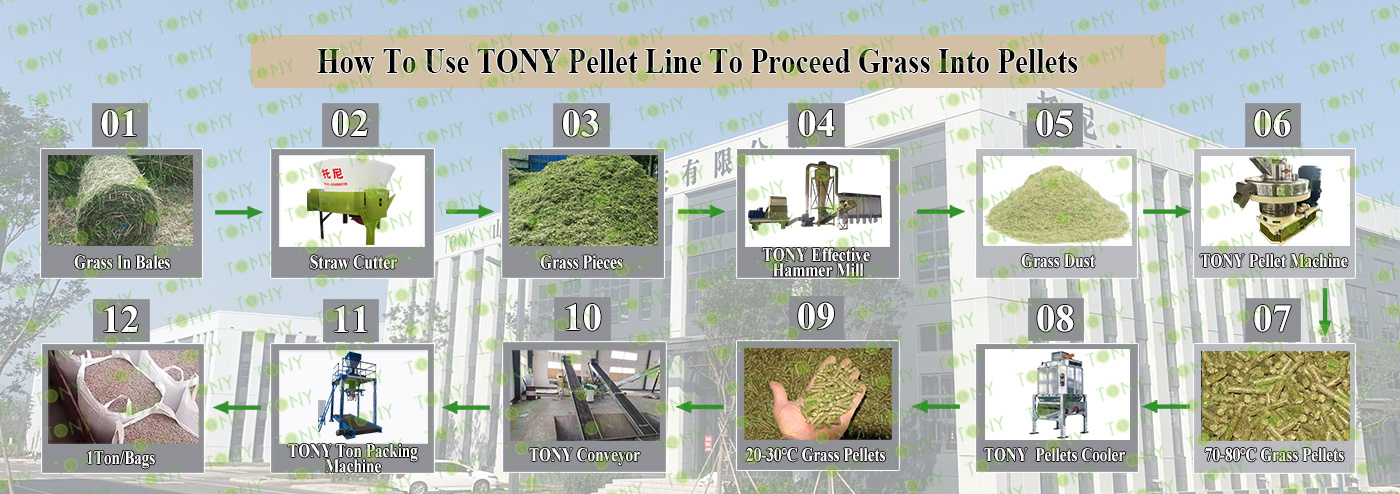


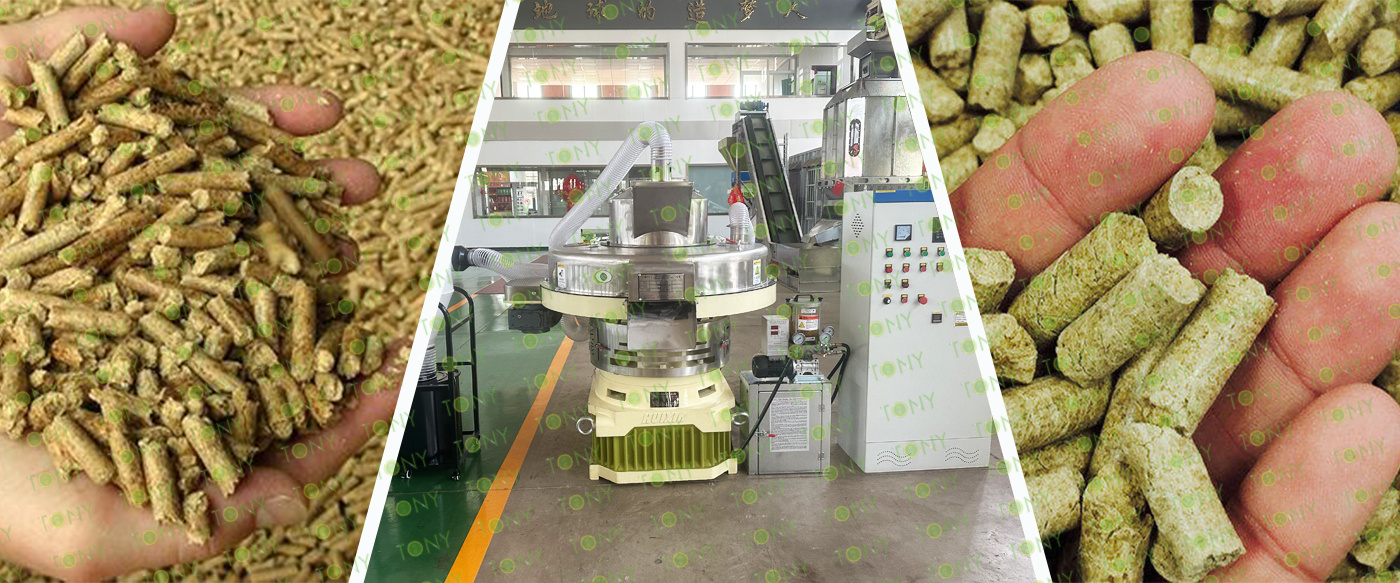
Following TONY Will Introduce For You For All The Necessary Machinery That Will Be Used For The Whole Pellet Production Line. Some Machines Can Be Custom Made By Customer According To Different Customer's Detailed Demand.Contact TONY For More Details With Quotation And Layout.
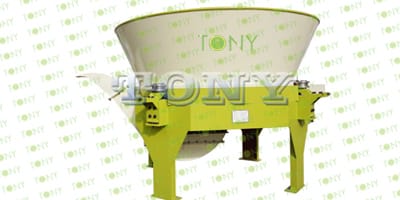 |
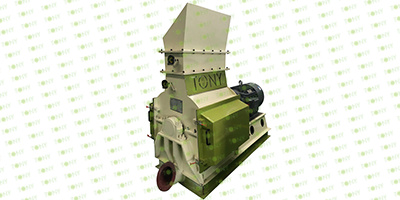 |
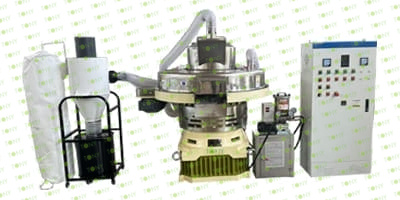 |
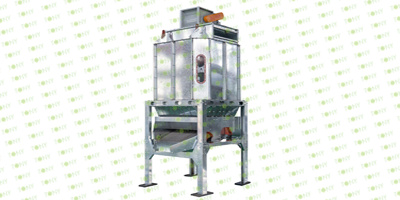 |
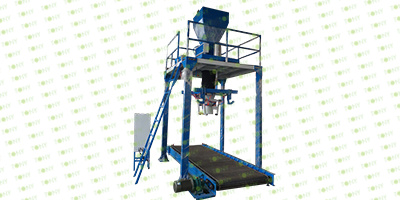 |
| Rotary Cutter | High Efficient Hammer Mill | Pellet Machine | Cooling Machine | Packing Machine |
|
1.To Grind GrassWidth <1.3m Into 30-40mm Grass. 2.Model: TPX3500*2Sets 3.Capacity:7-10Ton/Hour. |
1.Crush 30-40mm Chips Into 8-14mm Sawdust. 2.Model: TFD75-200-200KW *2Sets 3.Capacity:6-8Ton/Hour/Set Total Capacity:12-15Ton/Hour |
1.Model: TYJ551-III-132KW*6 Sets 2.Capacity:2-2.5Ton/Hour/Set*6Sets 3.Total Capacity:12-15Ton/Hour |
1.To Cool Pellets From 80-90℃ to 20-30℃ 2.Model:TCN-6 3.Capacity:12-15Ton/Hour |
1.Packing Pellets To 1Ton/Bags. 2.Model:TBD*1 Set 3.Capacity:12-15Ton/Hour |

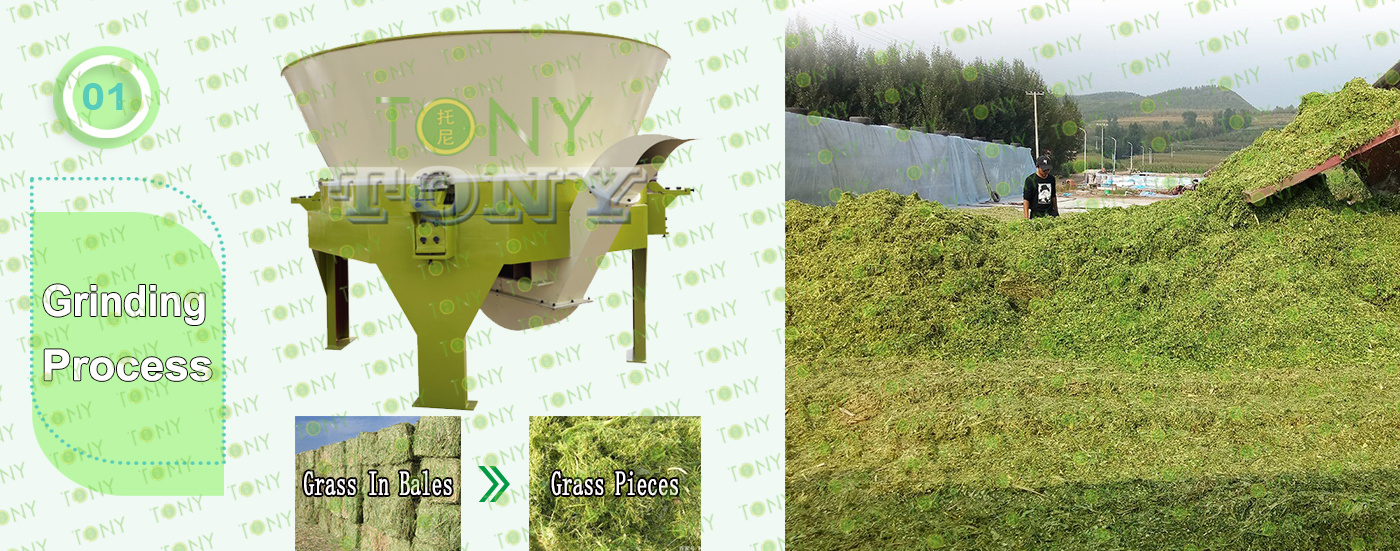
|
1.Chipping Process: A.This process is mainly used to grind the grass pellets into Grass with size 25-35mm. The finish Grass size can be adjustable by changing different sizes of screeners and adding flying knives inside the Rotary Cutter. B.This customer uses two sets of TONY Brand TPX3500 model : Main Parts: (1).TONY's new Rotary Cutter. (2).Feed and unload belt frequency control to prevent card material (3).Hydraulic system control for more thickness of raw materials (4).Electronic control system allows the equipment to be used normally (5).Contact TONY for more details with quotation. |
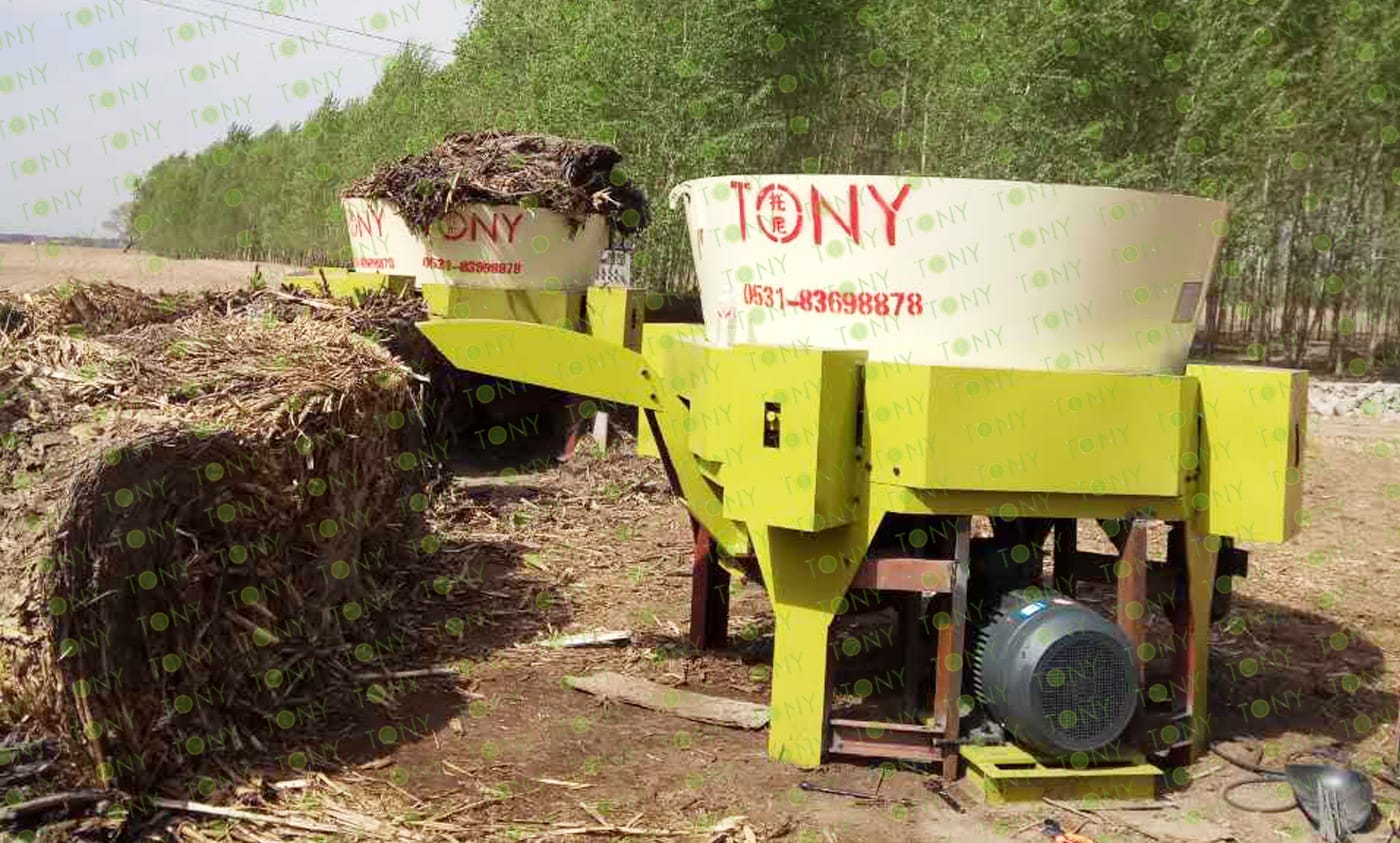

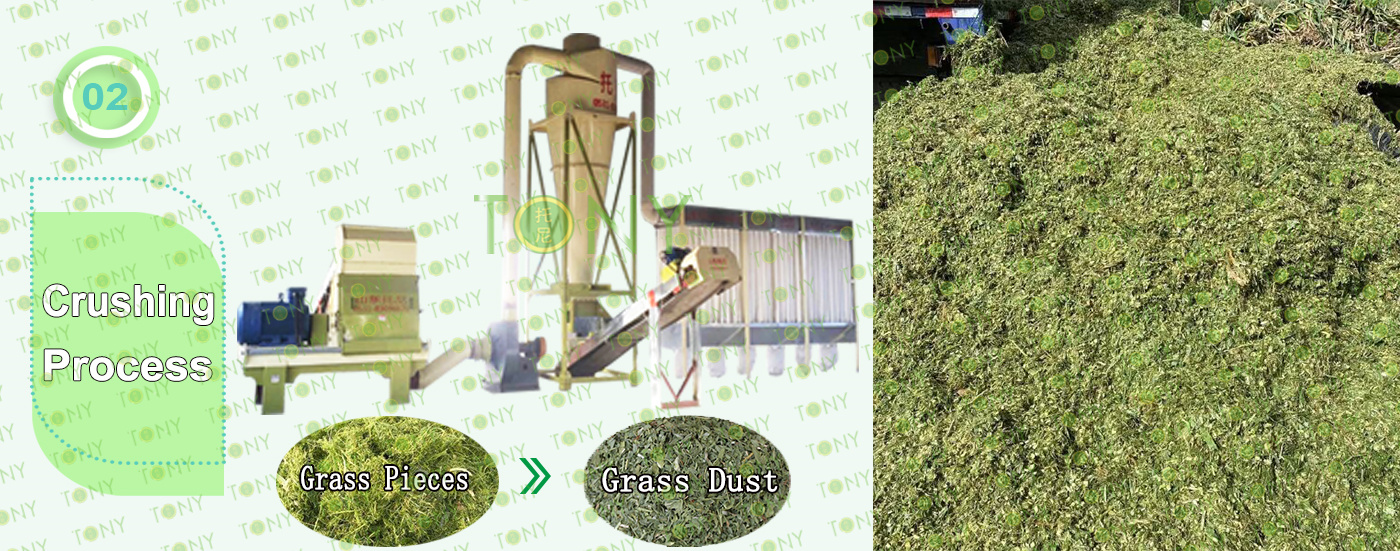
|
2.Grass Fine Crushing Process: A.This process is mainly used to crush 30-40mm grass into 8-14mm sawdust. B.Capacity:12-15Ton/Hour. C.TONY use High Effective Hammer Mill TFD75-200KW-2sets for this process. Main Parts: (1).TONY High Effective Hammer Mill. (2).90Holes Galvanized Dust Collector. (3).Sawdust Transportation Fan Blower. (4).Cyclone With Airlock. (5).Electrical Cabinets. |
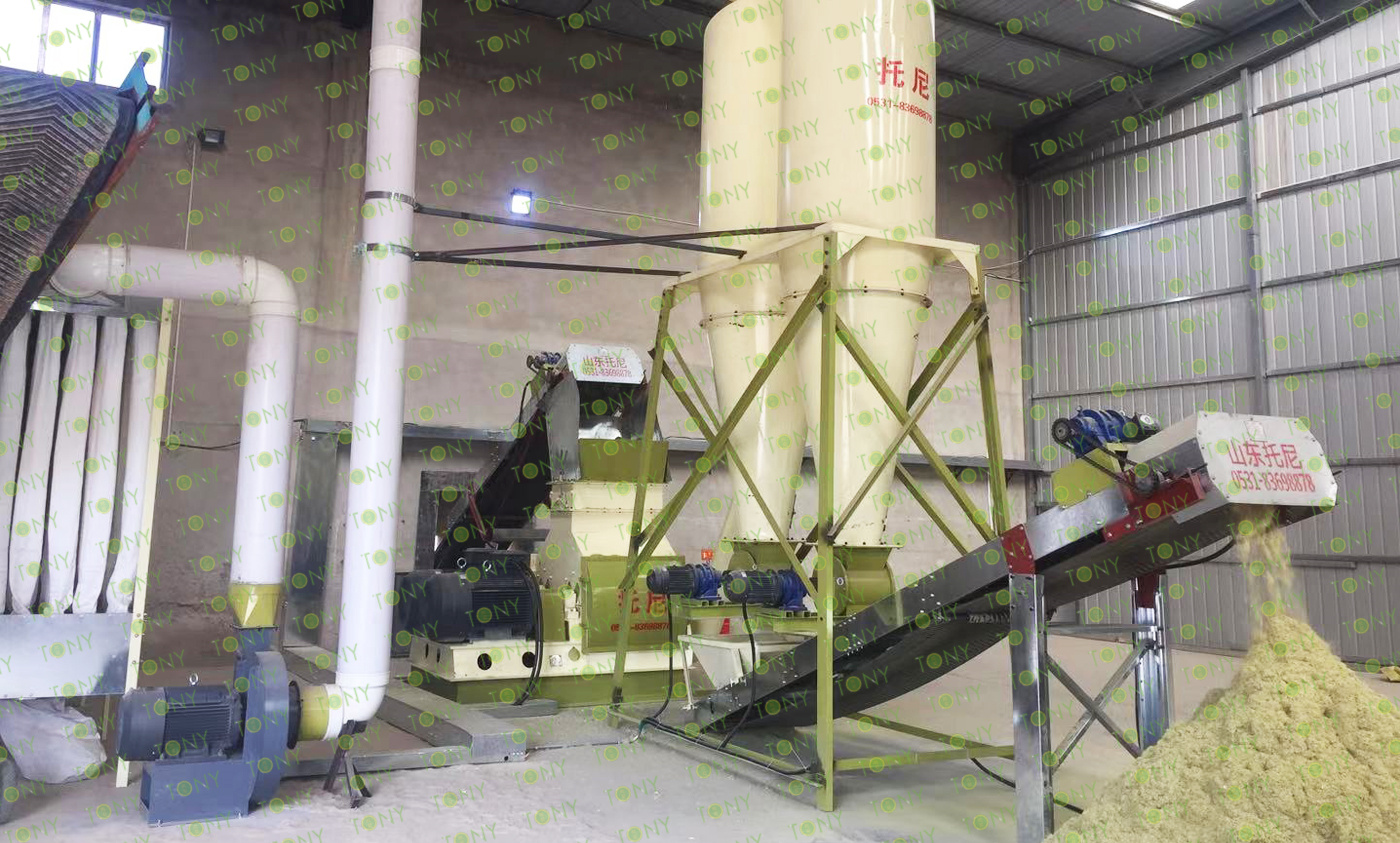

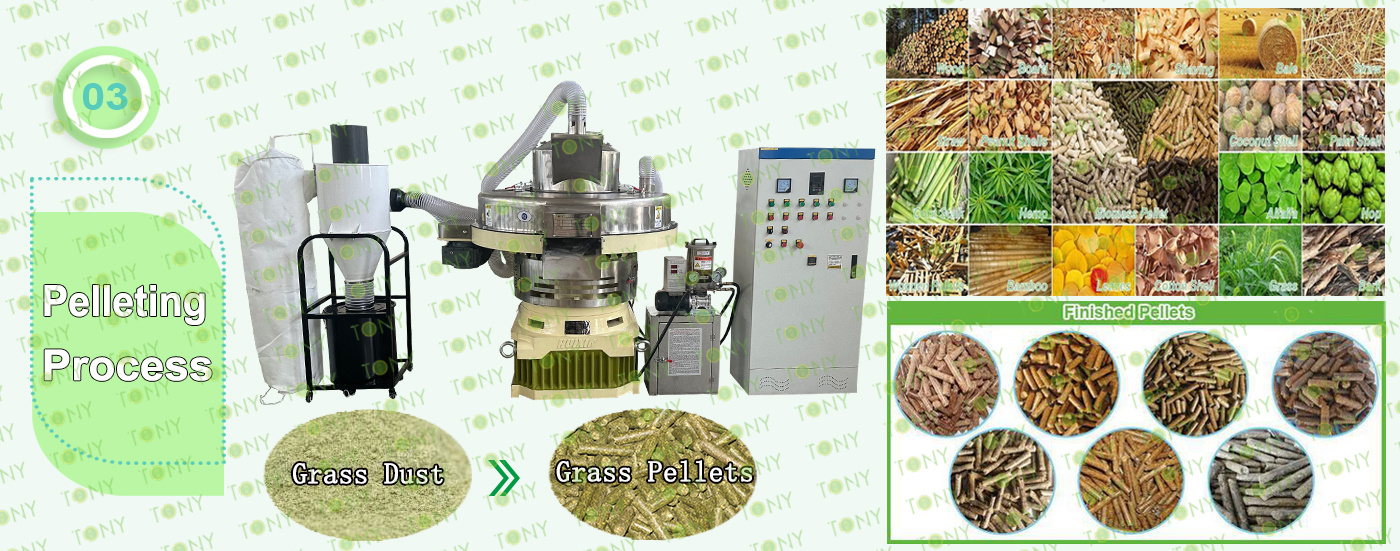
|
3.Pelleting Process: A.This process is mainly used to product pellets with φ12-15mm. B.Capacity:12-15Ton/Hour. C.The customer chooses 6 sets of TONY brand Vertical Ring Die Pellet Machine TYJ551-III-132kw with capacity 2-2.5Ton/Hour. Main Parts: (1).TONY's new Vertical Ring Die Pellet Machine. (2).Cyclone And Bags Dust Collectors. (3).Bearings Automatic Lubrication System. (4).Electrical Cabinets. You can choose TONY new type SS304 pellet machine or old type MS pellet machine. |
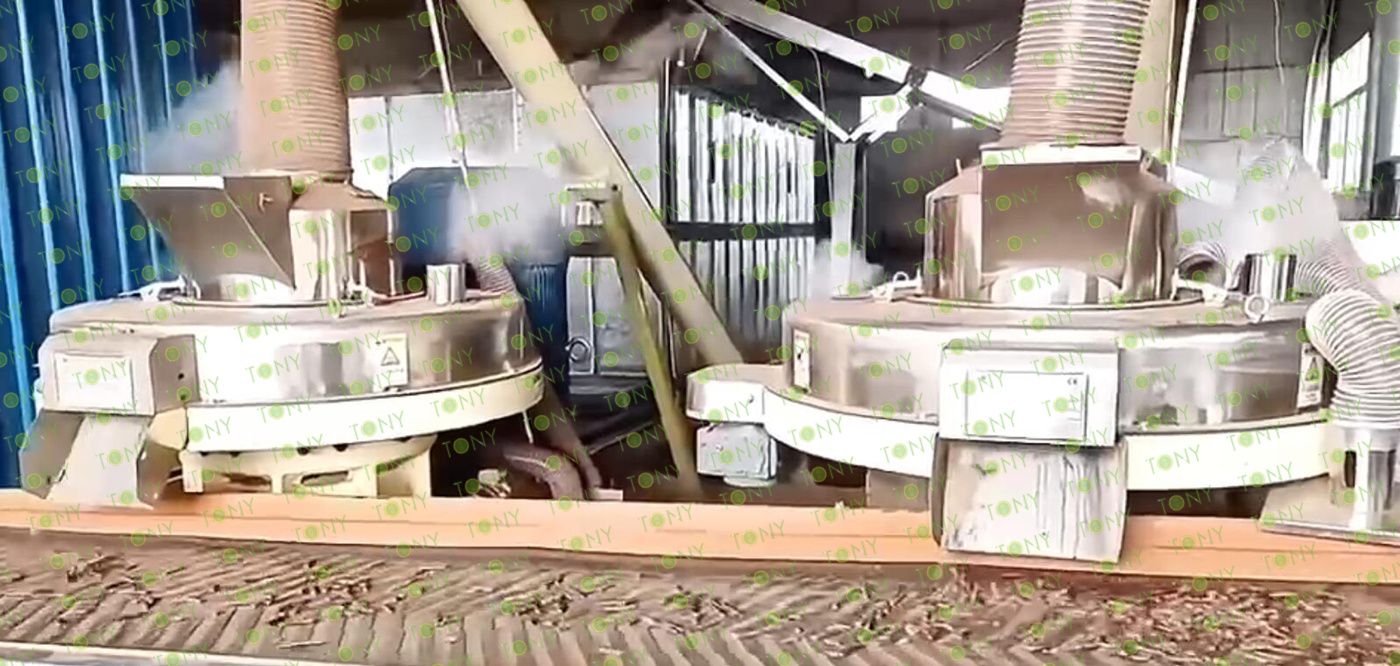

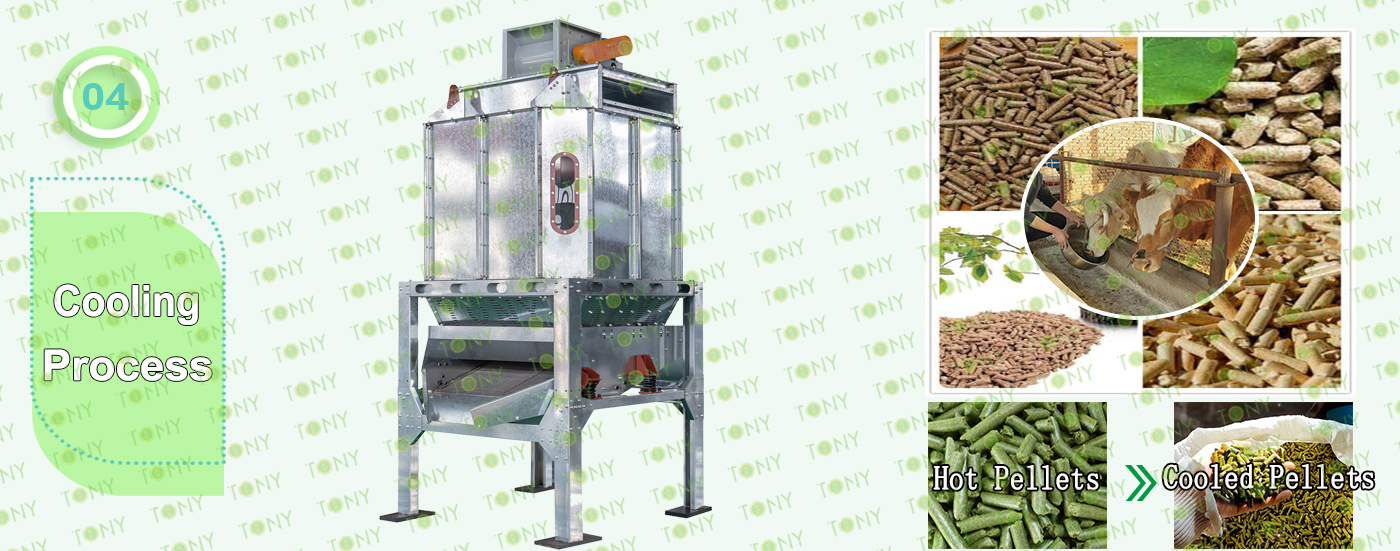
4.Cooling Process:
A.This process is mainly used to cool pellets from 80-90℃ to 20-30℃
B.The customer chose 1set of TONY Galvanized Cooler Separator with capacity 12-15Ton/Hour.
Main Parts:
(1).TONY's New Galvanized Cooler Separator With Vibrating Screen.
(2).Cyclone And Bags Dust Collectors.
(3).Fan Blower.
(4).Connect Pipes.


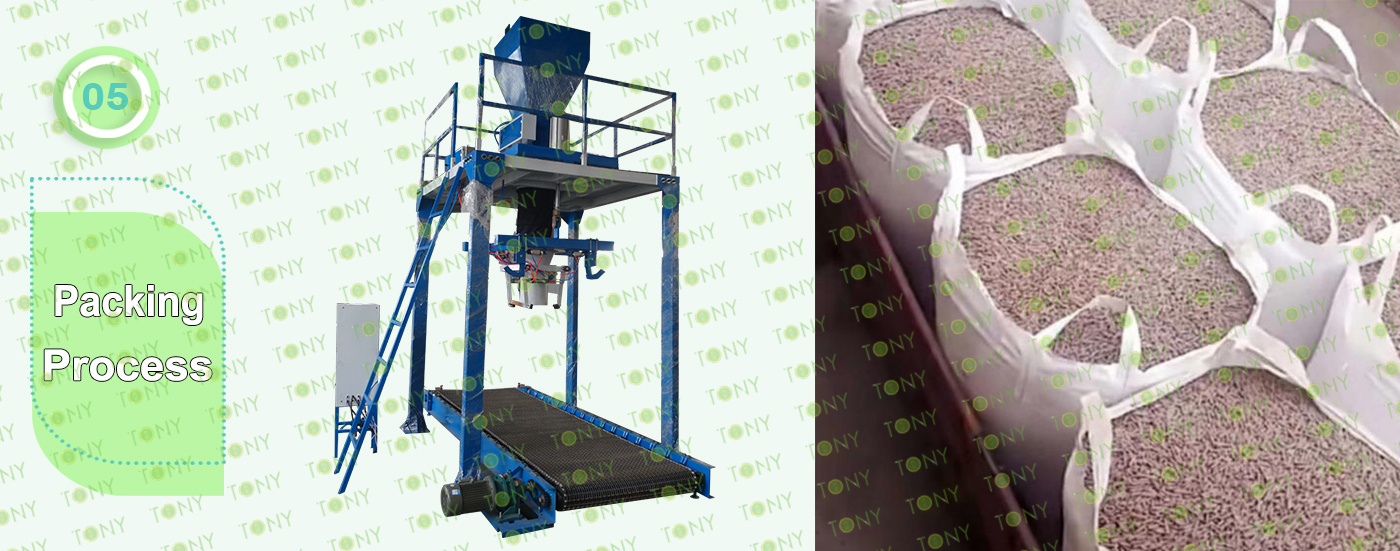
5.Packing Process
A.This process is mainly used to pack pellets to 1T/Bags.
B.The customer chooses 1 set of TONY Ton Packing Machine with 12-15Ton/Hour.
Main Parts:
(1).TONY's New TONY Ton Packing Machine.
(2).Sew Machine, Buyer Can Also Choose Hot Seal Machine For Chosen, To Confirm With TONY For The Price Difference.
(3).Bags Transportation Conveyors.
(4).Feeding Inlet Silo With 2㎥.
(5).Electrical Cabinets.

TONY Detailed Design 3D Layout With Detailed Size For 12-15Ton/Hour Grass Pellet Line According To Cusomer Factor Size
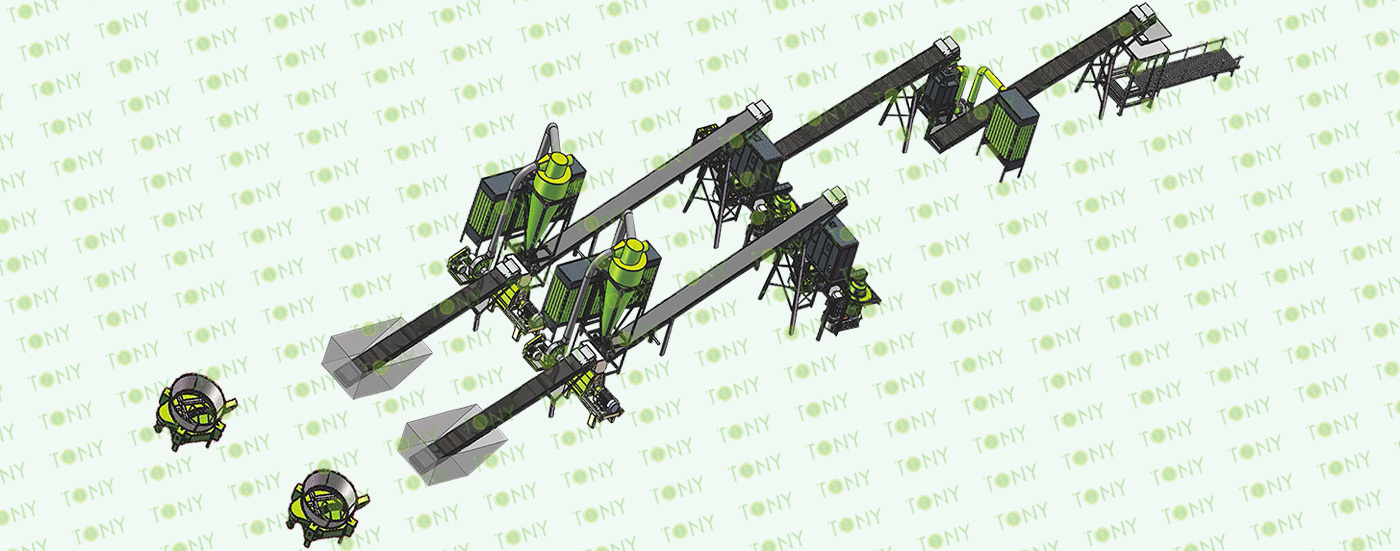

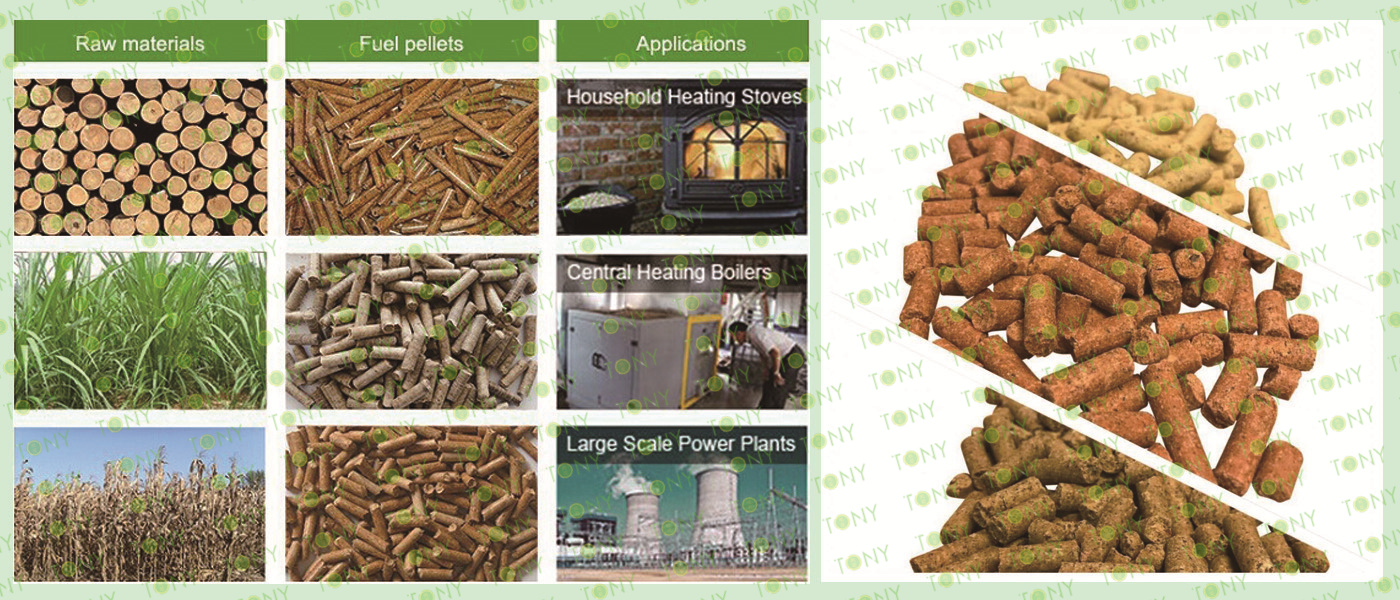
Here are some of the main advantages of grass pellets :
1. Environmental Protection Advantages
(1) Clean Combustion: Grass pellets produce fewer pollutants during combustion, especially lower emissions of sulfide and nitrogen oxides, helping to reduce air pollution.
(2) Renewable: The main raw materials of grass pellets are crop waste, such as straw, corn stalks, etc. These materials are renewable resources and will not lead to resource depletion.
(3) Reduce Greenhouse Gas Emissions: The use of grass pellet fuel can reduce the dependence on fossil fuels, thereby reducing greenhouse gas emissions such as carbon dioxide, and help slow climate change.
2. Economic Advantage
(1) Low Cost: The raw material sources of grass pellets are wide and the cost is low, making its overall production cost relatively low, suitable for large-scale promotion and application
(2) Efficient Energy Conversion: The calorific value of grass pellet fuel is high, usually around 3900~4800 kcal /kg, and even after carbonization, the calorific value can be as high as 7000-8000 kcal /kg, which can provide efficient energy conversion.
(3) Promote Agricultural Circular Economy: The use of agricultural waste to make grass pellet fuel not only reduces the cost of waste treatment, but also creates new economic value and promotes the development of agricultural circular economy.
3. Technical Advantages
(1) Easy Storage And Transportation: Grass pellet fuel is compressed and formed, small size, high density, easy storage and transportation, but also reduce the loss during transportation.
(2) Wide Range Of Application: Grass pellet fuel is suitable for a variety of combustion equipment, including household heating equipment, industrial boilers, etc., with a wide range of applicability and flexibility.
(3) High Degree Of Automation: Modern grass pellet production line usually adopts automatic control system, simple operation, high production efficiency, and can meet the needs of different scales.

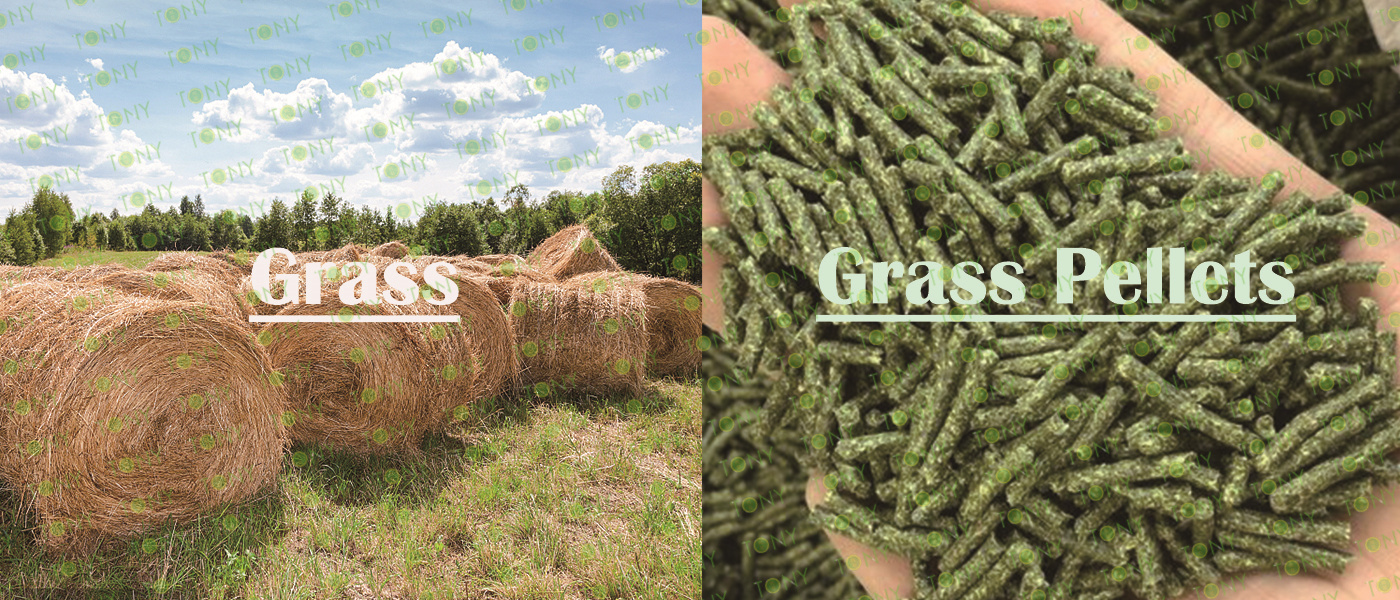
1. Overview Of Market Prospects
As a new type of biomass energy, grass biomass pellets have the advantages of high energy density, easy storage and transportation, and are widely used in industrial boilers, power plants and home heating. With the improvement of environmental awareness and policy support, the grass biomass pellet market has broad prospects, the global market size has reached billions of dollars, and is expected to maintain rapid growth in the next few years.
2. Development Environment Analysis
(1) Policy Support
The world has strongly supported the development of renewable energy and introduced a series of policy measures, such as subsidies and tax incentives, to provide a good policy environment for the grass biomass pellet market.
(2) Raw Material Supply
There are abundant biomass resources in the world, such as crop waste and forestry waste, which provide sufficient raw materials for grass biomass pellets.
3. Future Prospect Prediction
With the increasing pressure on environmental protection and the continuous consumption of non-renewable energy, grass biomass particles as a representative of clean energy, its market demand will continue to grow. It is expected that the grass biomass pellet market will continue to maintain a rapid growth trend in the next few years.
In summary, the grass biomass pellet market has broad prospects, and is strongly supported by policies and raw material supply, and market demand continues to grow. However, the industry is also facing some challenges, and enterprises need to continue to innovate and enhance their competitiveness to meet the development needs of the future market.



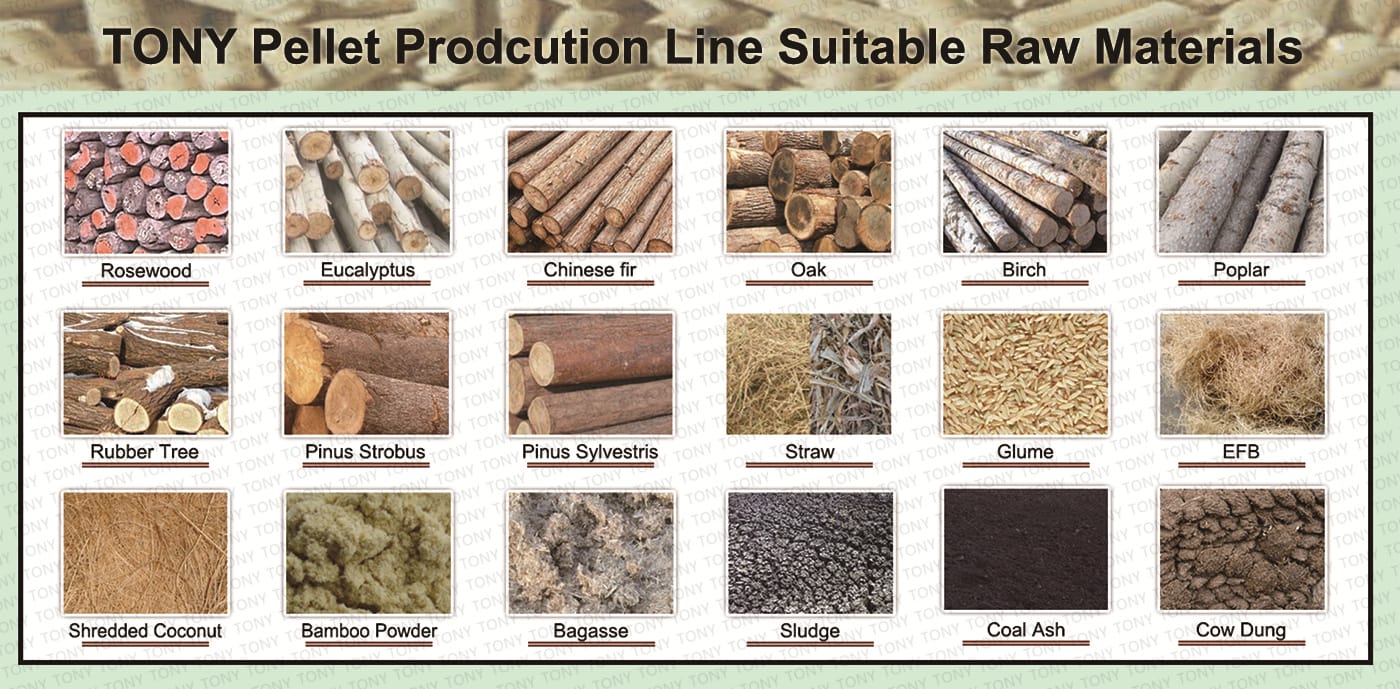
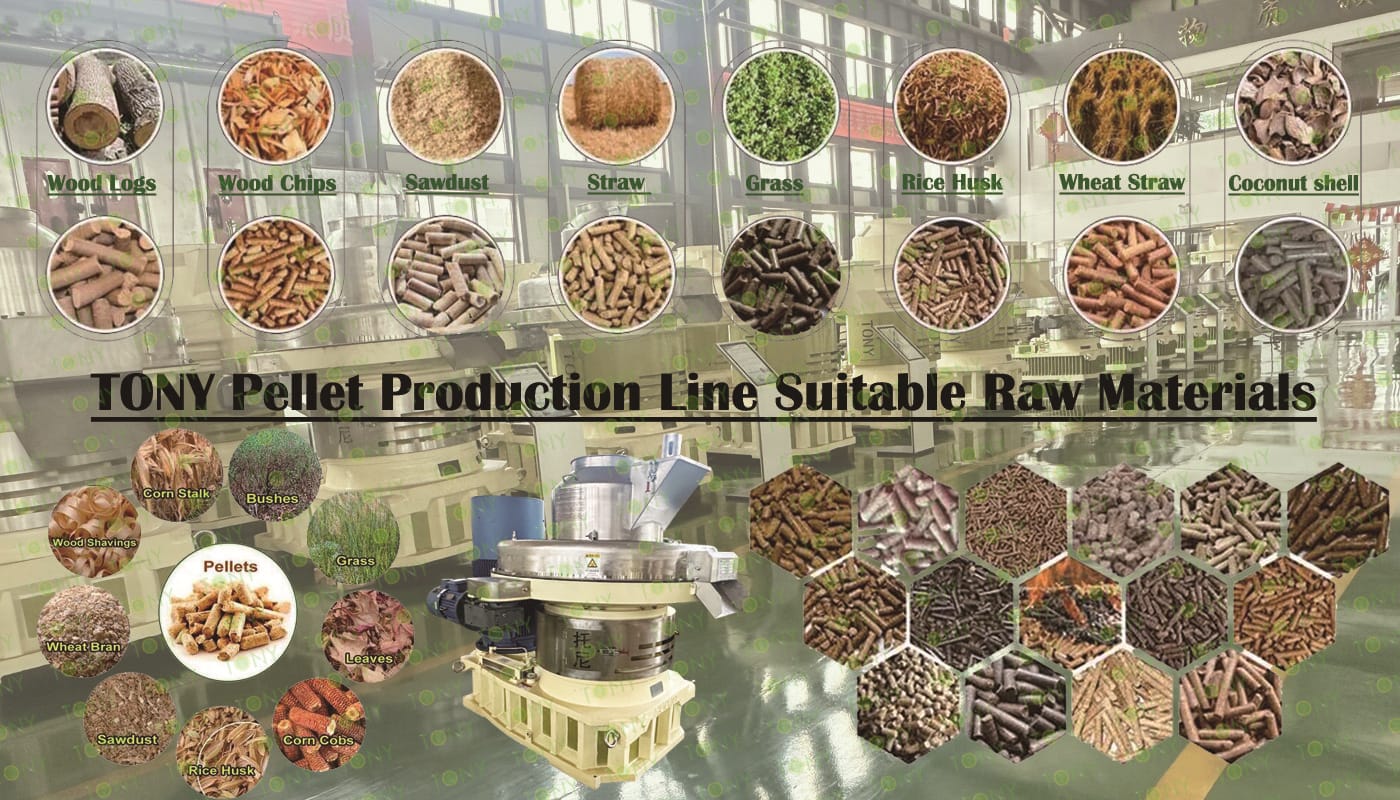

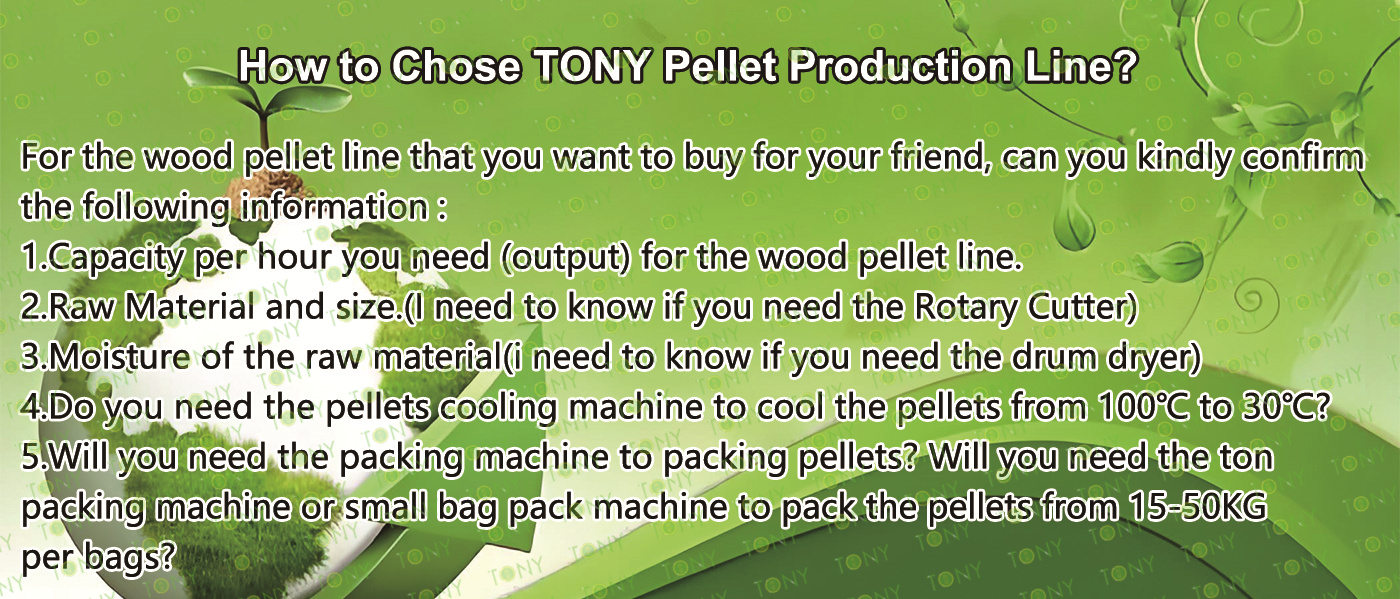

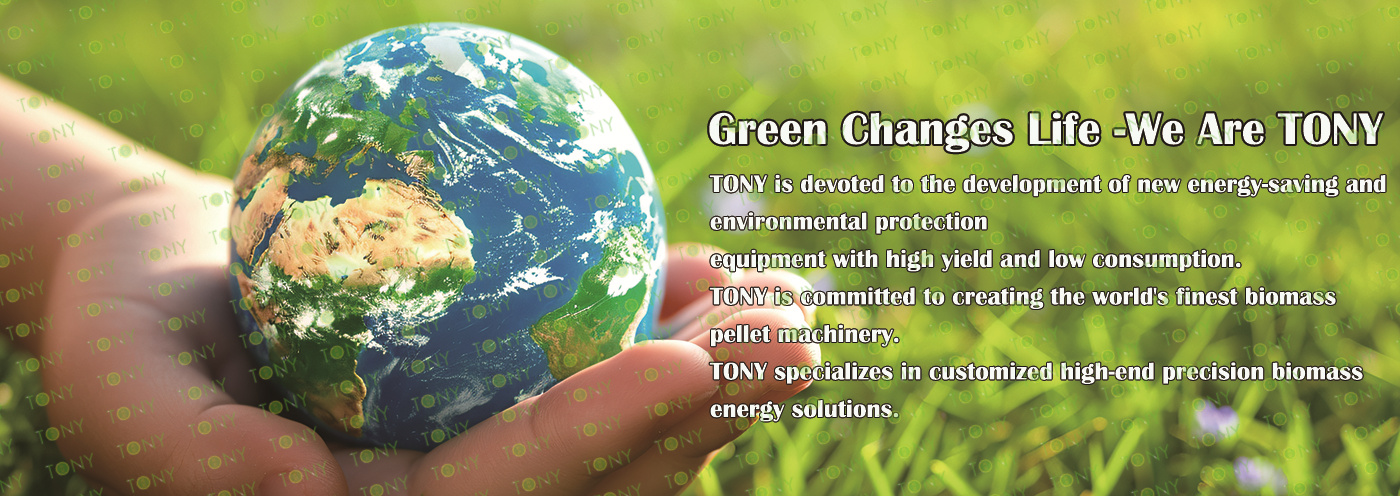

SHANDONG TONY ENVIRONMENTAL PROTECTION SCI-TECH CO.,LTD is an integrated enterprise specializing in developing, anufac-turing and international trade of pellet equipments for over 20 years.
Main products are biomass ring die and flat die pellet machine,biomass pellet line, feed pellet machine, drying, crushing equipments,cooling and ton packing machine.
Looking to the future, we sincerely hope to establish a long-term reliable cooperation relationship with clients all over the world!
TONY is a professional manufacture for biomass pellet machine,pellet production line for over twenty years.Main products are biomass ring die and flat die pellet machine,biomass pellet line, feed pellet machine, drying, crushing equipments,cooling and ton packing machine.
The new pellet machine adopts stainless steel material ,with high capacity and lower consumption ,which is highly pressed by domestic and abroad all over the world.
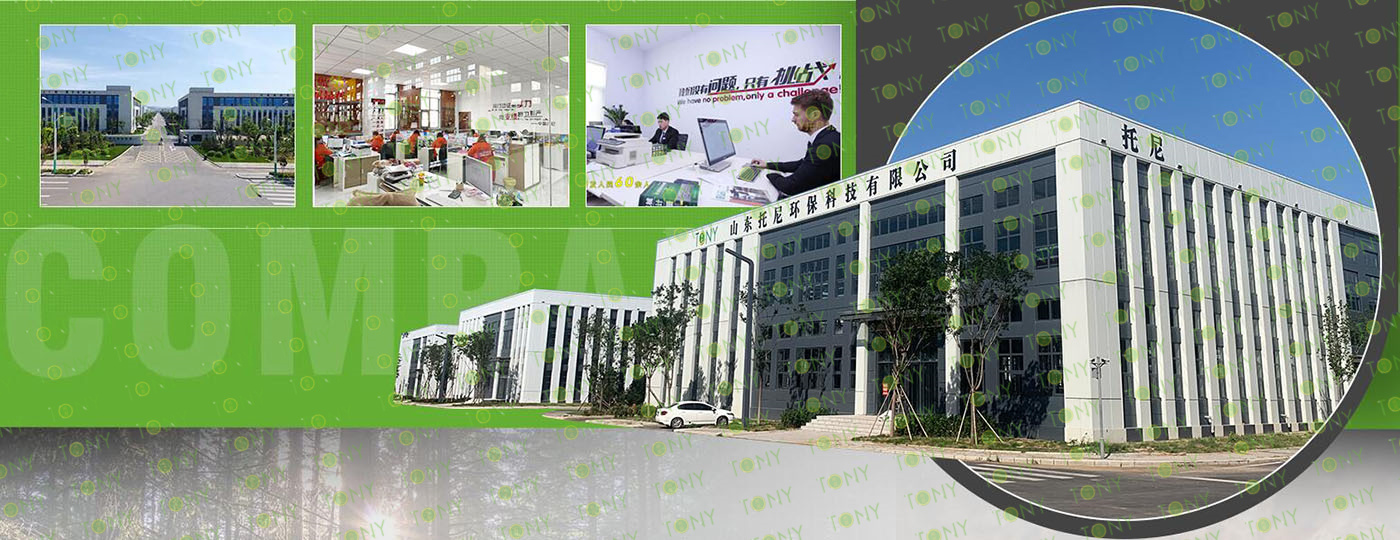
2025 Tony Machinery - All Rights Reserved. Map